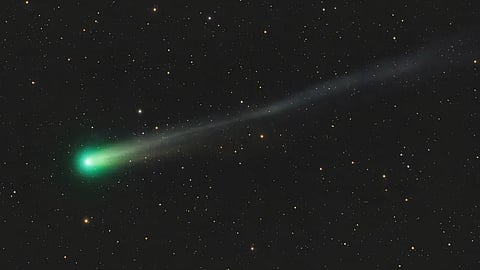

Astronomy enthusiasts are gearing up for a rare sky event. The Mount Lemmon Survey in Arizona detected Comet Lemmon, which will be visible on October 22.
This begs the question: Will the comet appear bright enough to view with the naked eye?
Experts believe it might reach magnitude +3.5 to +4.4 under optimum conditions. Observers are eager to see its expanding coma and tail.
Comet Lemmon will travel about 55.4 million miles from Earth. It will be seen low in the northwest sky after sunset. Small telescopes or binoculars can easily see its tail.
Visibility may be limited as the comet passes fast across constellations. The comet will travel through Bootes, Ursa Major, and Canes Venatici until mid-October, Moneycontrol reports.
The Orionid meteor shower will peak between October 21 and 22. Under gloomy skies, the rate might exceed 20 meteors per hour. Comet SWAN (C/2025 R2) will also be visible close by. This alignment provides a unique opportunity to observe two comets. Skywatchers may see meteors and comets on the same night.
To get a clear view of the comet, observers should avoid city lights. Allowing eyes to get used to darkness improves the visibility of faint structures. The narrow crescent moon after October 13th will reduce interference. Clear skies after sunset provide the best opportunity to see Lemmon.
Comet Lemmon will reach perihelion on November 8. Its closest approach to the Sun will be 49.25 million kilometers. October 22 remains the most popular date for viewing.
